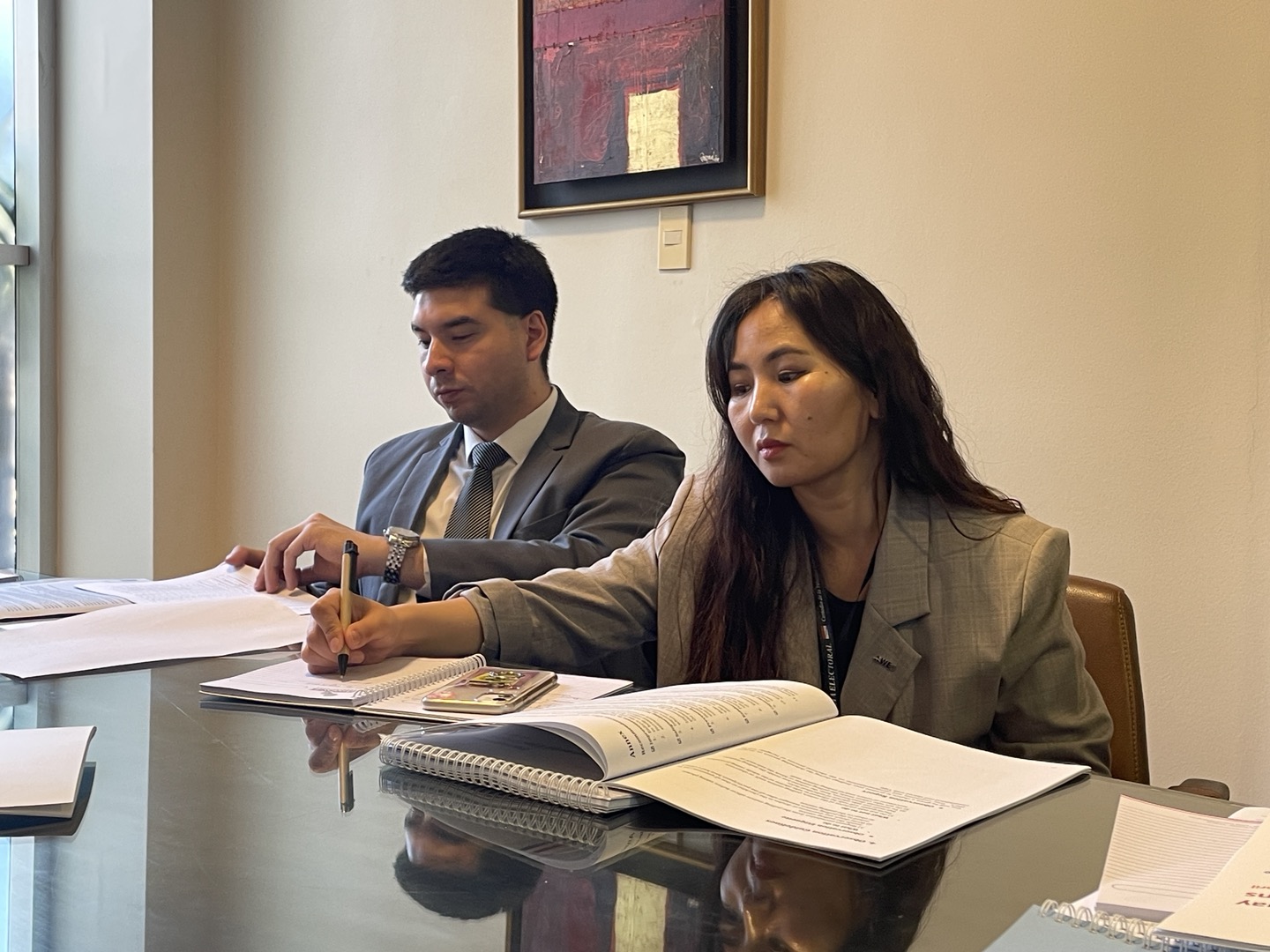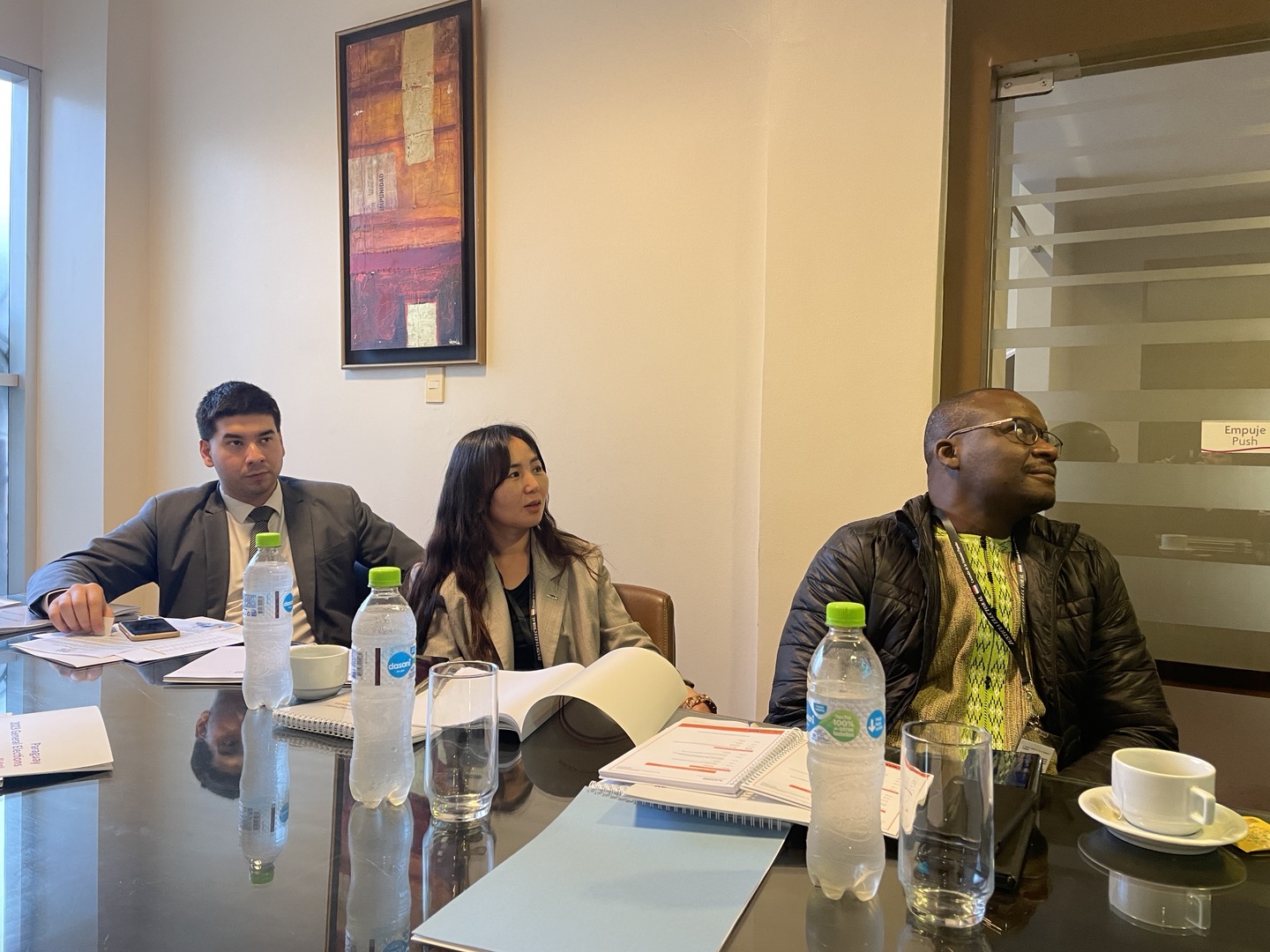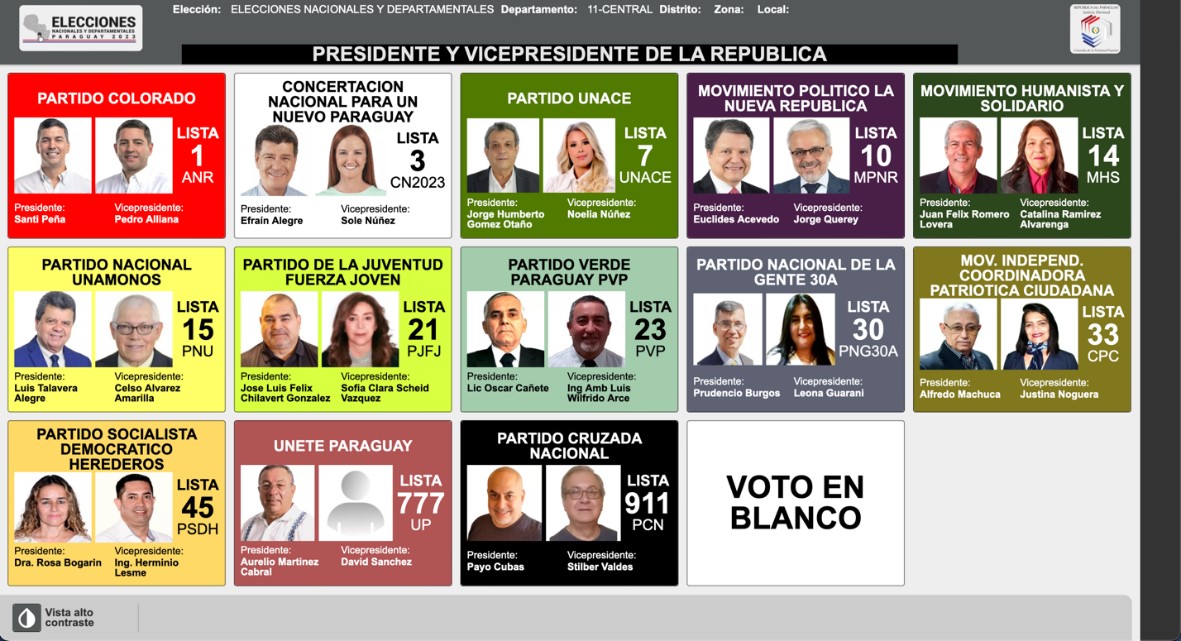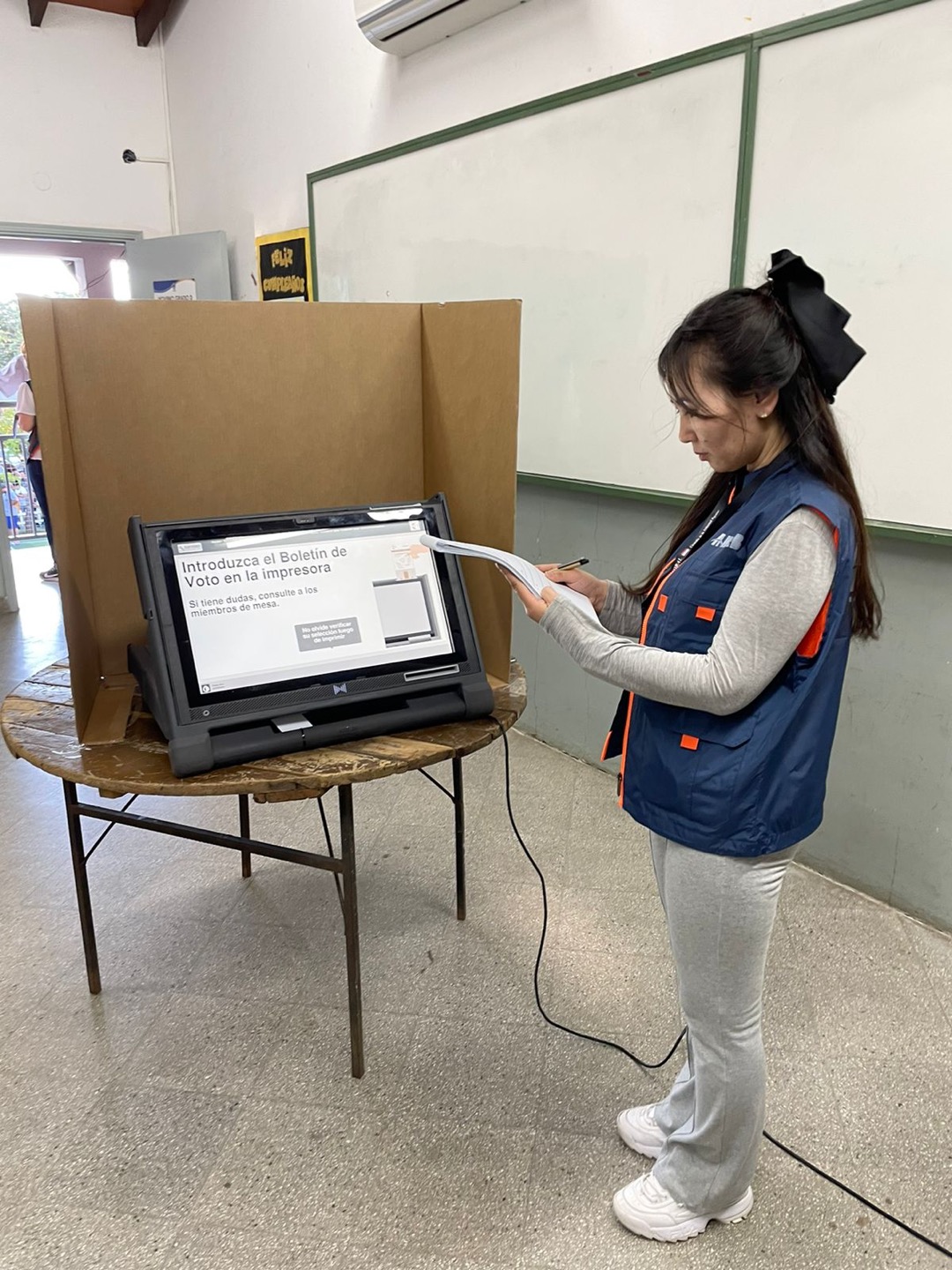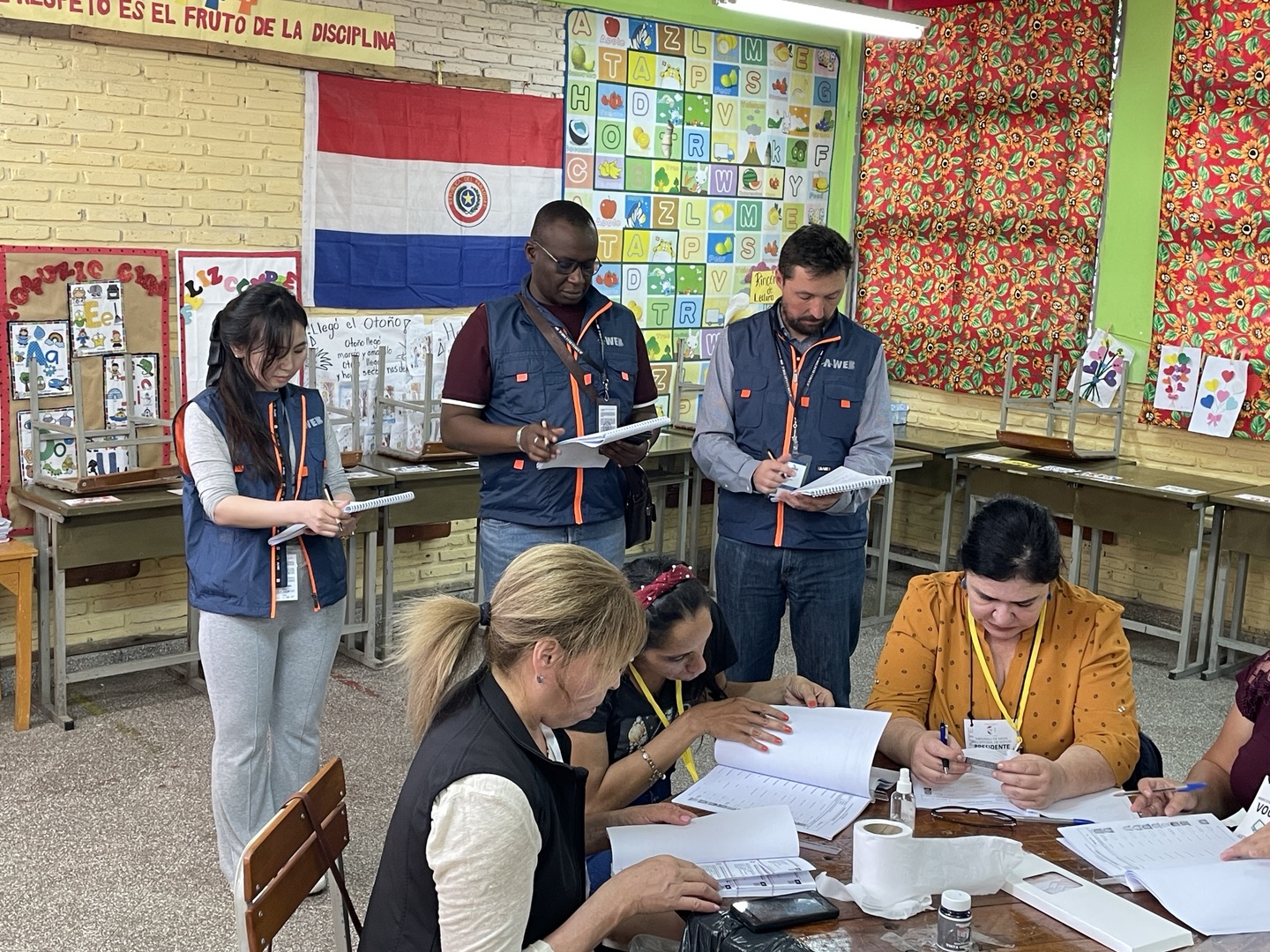| Experience with Observing the 2023 Paraguayan General Elections as Observer of the A-WEB Mission |
|---|
| Last updated 2023-05-23 |
|
Experience with Observing the 2023 Paraguayan General Elections as Observer of the A-WEB Mission Contributed by ALTANCHIMEG Purevsuren Senior officer of ITC of General Election Commission of Mongolia At the invitation of the Supreme Electoral Justice Tribunal (TSJE, acronym in Spanish,) of Paraguay, the Association of World Election Bodies (A-WEB) sent an election mission. Its mission comprised four election officials and electoral experts from four countries, including Belgium, Bolivia, Burkina Faso, and Mongolia, with two representatives from the A-WEB Secretariat. A-WEB deployed a team to observe the 2023 General Elections of the Republic of Paraguay from April 26 to May 1, 2023, in Asuncion, the capital of Paraguay. I was one of the participants from the General Election Commission of Mongolia in the Election Visitor Program (EVP). Therefore, I would like to share my experience observing the electoral system in Paraguay. TSJE provided high-quality
information sessions from April 26 to 29 to international election observers to
give a clear understanding of the Paraguayan election system, the legal
framework of the election, the general organization of the election, voter
outreach programs, and voting devices. They even organized meetings for
election missions with presidential candidates, non-governmental organizations,
and researchers about the country's political situation and democracy.
Additionally, A-WEB's observer
guide contains all essential information about the Paraguayan election system
handed out on the first day of EVP. A-WEB's Election Visitor Program provided
three separate briefing sessions to train the participants about the election
observation methodology, the electoral system (including the use of electronic
voting devices), political parties, candidates, campaign issues, and
election-day procedures, as well as debriefing session to exchange impressions
about the electoral system in the country and think about areas for
improvement. The 2023 General Elections were
held on the same day to elect the President and Vice-President, 45 members of
the Chamber of Senators (Upper Chamber), 80 members of the Chamber of Deputies
(lower Chamber), 17 Governors (departments), and 257 Departmental Councilors.
Totally, Paraguayans elected 768 political positions from 9,095 candidates from
26 parties.
Highlights of the 2023 General Elections
Electoral
roll: 4,832,186 voters are
registered on the voter list. 49% (2,372,444) are female voters, and 51%
(2,459,742) are male voters. Registration on the electoral roll can be done
online and offline. It is said that women in urban areas turned out at higher
rates. Of the eligible voters, 31% (1,489,501) are young voters aged between 18
and 29. They are automatically registered on the electoral roll to increase
youth participation in elections. Voting is compulsory for registered voters.
Voters who do not vote must pay a fine of USD 14. Voter turnout for the 2023
presidential elections was 63.23%, a slight increase from 61.25% in 2018. Voting from
abroad: Paraguayans
living abroad can participate in presidential and senatorial elections. These
41,505 voters represent 0.87% of the total voting population and are registered
at 88 polling stations in four countries: Argentina, Brazil, the USA, and
Spain. Paraguayans living in other countries are ineligible to vote through
electronic voting. Those voters can participate in only two elections,
presidential & senatorial elections. As TSJE announced, voters can also
vote by mail. Home
voting: TSJE
provides home voting to help voters with disabilities participate in electoral
processes. It took place on election day when the general population cast their
ballots. Polling
Station Setup: Paraguay's
polling stations were quite different from Mongolia. There are 1,157 polling
centers (electoral precincts) nationwide, primarily public schools. Those
polling centers contain 10 to 16 polling stations (voting tables). There are
12,259 polling stations, and the maximum number of voters per polling station
is 400. A polling station is run by three members (one chairman and
two members) who organize the voting process. Besides the polling station
members, the other actors present in the electoral precincts are the precinct
coordinators designated by TSJE, council members, the technical support team
members, TREP officers, helpdesk staff, and police officers. In addition, party
observers (a primary observer and an alternate) are allowed in voting
precincts. Polling stations remain open from 07:00 to 16:00. It was also
interesting for me because, in my country, polling stations are available for
about 15 hours from 07:00 to 22:00. Election
system: the
system used for senatorial, Chamber of Deputies, and department council
elections was radically transformed and moved from a closed list to an open
list system. Compared to previous elections, where voters were only allowed to
express one vote for the entire list, this time, voters can choose one
preference for one single candidate. This is for municipal council elections.
As a result, voters can directly modify the list order provided by parties by
giving preference votes to candidates on the list. The voting
modality has been changed: voters cast their ballots through electronic voting
machines. The entire country will use
e-voting devices for the first time. A large share of the voting population
already knows how to operate the voting machines, as the same system was used
for the 2021 local and 2022 primary elections. In addition, TSJE organized
large-scale training across the country over the last few months. The voting machine has a touch
screen and DRE (Direct-recording electronic) system. There are two ways to
record voters' choices: a printed receipt and digital data on a chip inside a
ballot. The machine can be used for the counting process too. The voting
machine is not connected to the Internet. A total of 15,380 voting devices were
used in the elections. Voting: Voting starts at 07:00 on
election day. The voter inserts the ballot into the machine and makes choices
on the screen at the polling booth. After confirming their choice, a hard copy
of the voter's selection is printed out. The voter verifies the receipt, folds
it, and returns to the table where plastic bags for ballot papers are attached; Closing
procedure: After
the polls are closed at 16:00, the polling station staff will switch the
device's operating mode and start the ballot-counting process. The ballot paper
has a chip, and the voter's choice is stored on this chip. Voting information
is recorded in two ways, in paper form and the form of data on a chip. Once the
device is switched to counting mode, the ballots are read one by one, and the
total result of the polling station is obtained. After counting, the results
are printed and signed by all polling station members. Complete results are
printed for all polling station observers. Transmission
of Results / Transmission process: Once the vote-counting process finishes, the TREP
(Transmission of Preliminary Election Results, acronym in Spanish) results certificate, the minutes
of the counting, and the results certificates are printed and signed by all the
polling station members. Finally, a TREP officer in charge
of transmitting the results sends the result certificate to the headquarters of
TSJE. The results certificates are shared with party observers. The fact that
the TREP venue is located within the electoral precinct ensures voting records
are not tampered with. The speed and quality of the scanner enable an expedited
and efficient transmission of voting records. TSJE collects the received results
and shares the preliminary election results directly on its website. Within
three hours, 92% of counting results were collected from polling stations
nationwide.
Things I Found New and Interesting in the 2023 General Elections
The first
thing is a help desk for voters. There is a help desk for voters who need assistance at
the entrance of each electoral precinct. The help desk is usually located near
the entrance. This desk is staffed by trained
students who are interns at TSJE to provide necessary assistance and
information to voters with special needs. For example, the help desk offers
braille instructions, audio headsets, magnifying glasses, and information on
assisted voting to support disabled voters, the elderly, pregnant women, and
voters carrying children. In addition, its staff helps voters explain how to
use the voting machine using a practice device. As TSJE explained, Paraguay used
e-voting devices for the first time in national elections even though they lost
8,000 machines in a massive fire last year. I am an IT person in my country and
am in charge of the e-voting system. Therefore, I was very interested in the
Paraguayan e-voting device and worried about using it. E-voting devices were
successfully applied to the elections without any major issues. I want to congratulate TSJE for
conducting the general elections smoothly. Also, I was interested in electoral
system reform from a closed list to an open-list proportional system. It was
also interesting because my country has used a plurality system for many years
(except in 2012). Currently, the Parliament is discussing a parallel system
with an open-list proportional system. As I observed, Paraguayans implemented
the open-list system without problems. Even a voting machine was suitable
for an open list system. TSJE developed an e-voting simulation
application /https://simuladoroficial.tsje.gov.py/ to help
voters practice voting. It was an excellent idea for me. An open-list system
and voting machines were used in the simulation. They did a great job.
Thanks to A-WEB for organizing an EVP for the 2023 general elections in Paraguay. Everything was well-organized. The participants learned many things from the EVP program and the Paraguayan election system.
Relevant article
|
